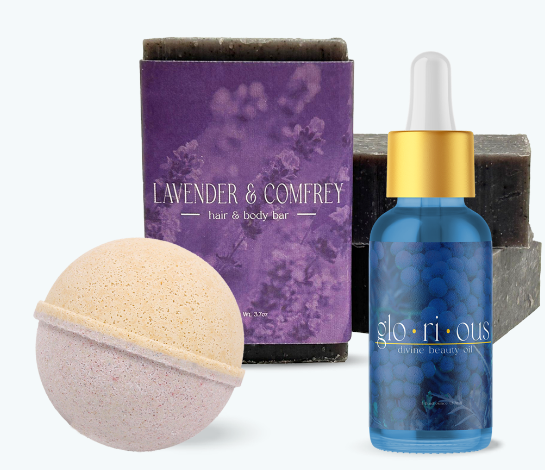| Back to Back Issues Page |
 |
|
Essential Oils May 09, 2024 |

Frankincense & Myrrh
Continuing on with ancient oils. Oils were around for hundreds of years and used for healing and as beauty treatments for several years and are used in products even now. The History of Essential Oils
Since ancient times, and as near as we can tell from the beginning of recorded history, the plant kingdom has provided rare and powerful extracts and essences that have long been prized for their beauty enhancing, medicinal, aromatic and therapeutic value.
Many plants have been the basis for herbal and botanical medicines and remedies for thousands of years and are the root of today's pharmaceuticals. The earliest that we can find evidence of the use of Essential Oils usage occurs in the 3000-2500 B.C. period.
Words like "aromatherapy" and "essential oils" were not in use, but there is evidence that civilizations were creating extracts containing oils and resins from aromatic plants during this time period.
Usually, the Egyptians are given credit for being the first to use aromatic extracts for both spiritual and physical well-being. But it is believed that essential oil-like extracts were also being used in China and India at nearly the same time. The Incense Trail - an overland trade route that has been written about and well documented from Palestine south along the western edge of Arabia to areas now occupied by the countries of Yemen and Oman. Interestingly, this north-south route was intersected at Petra, Jordan, by an east-west route that connected India and China with Egypt. The lucrative trade that moved in all four directions on these routes moved spices, frankincense, myrrh, spikenard, and other aromatics to the Egyptian, Greek, Roman, Indian and Chinese empires between 1000 B.C. and 100 A.D. EGYPT, EARLY 2000 BC As early as 2000 BC, the highly evolved Egyptians were using Essential Oils for medicinal benefits, beauty care, spiritual enhancement, and in literally all aspects of their daily life.
Aromatics and perfumes were worn in Egypt by ruling families and the priests. There are numerous hieroglyphics depicting men and women wearing perfumed wax cones that would provide a pleasant scent and moisturize the skin. Egyptian temple priests, also known as the doctors of the day, employed a variety of aromatic balms, resins, and powders in many different ways for both religious and medicinal purposes. Many pictorials on temple walls show Egyptian royalty using Essential Oils.
GreeceHippocrates, considered the father of modern medicine, is reported to have advised that "The way to health is to have an aromatic bath and scented massage every day." He reportedly believed strongly in the medicinal benefit of fumigation with aromatics and used fumigation in the city of Athens to combat the plague.
A contemporary of Hippocrates, Theophrastus wrote the first known treatise on the scent, titled "Concerning Odors." He inventoried all the Greek and imported aromatic medicines and wrote of ways they could be used. Commenting on the therapeutic value of natural perfumes, he said: "It is to be expected the perfumes should have medicinal properties in view of the virtues of their spices. The effect of plasters and of what some may call poultices prove these virtues since they disperse tumors and abscesses and produce a distinct effect on the body and its interior parts."
IndiaIn India, essential oils have been a core element of the Ayurvedic health care system for centuries.
No one knows how old Ayurvedic medicine is, but it has been practiced for at least 4000 years and is still widely practiced in India today. One of its principal aspects is aromatic massage, where Essential Oils - especially sandalwood - are used. Ayurvedic literature from 2000 BC records Indian doctors administering oils of cinnamon, ginger, myrrh, coriander, spikenard and sandalwood to their patients. The Vedas, the most sacred book of India, mentions over 700 different aromatics and the uses of perfumes and aromatics for religious and therapeutic purpose. Basil is a sacred plant in India, believed to open the heart and mind, bestowing the energy of love and devotion. Sacred to Vishnu and Krishna, it strengthens faith, compassion, and clarity.
Rome
The Romans used aromatic materials with sheer decadence. They bathed with them several times a day, and massage also played a large part in the culture. Oils were used to scent the hair, body and the bed. The most beautiful oils available were blended by highly skilled perfumers, creating celebrated fragrances that were broken down into three categories: 'ladysmata' (a solid unguent), 'stymmata' (a scented oil) and 'diapasmata' (a powdered perfume).
A prominent Greek physician, the doctor for the Roman army, Pedacious Dioscorides, wrote an impressive reference work on herbal medicine during the first century A.D. Several aromatherapy remedies he discusses are still used today. Quoting him: " Myrrh: "Doth strengthen the teeth and ye gummes", Juniper: is described as "diureticall", Marjoram: is described as "soporific", Cypress: "helps with the flux of the belly (diarrhea) and doth also stanch the bloud." China
In China, the use of Essential Oils has been traced to before the time of Christ. The oldest surviving medical text in China is Shennong's Herbal, dated at around 2700 BC, contains information on 365 plants. Shennong was a ruler and cultural hero of China who taught his people the practices of agriculture. He consumed hundreds of herbs to test their medical value and is said to have discovered tea and to be the father of Traditional Chinese Medicine, including acupuncture. Today, we have documented that myrrh is helpful with gum infections; marjoram has some sedative properties,and cypress can be useful in alleviating diarrhea. The Bible
Both the Old and New Testament have dozens of references to aromatic plants, with at least 12 Essential Oils are mentioned over 9 times respectively. BY REVELATION, MOSES RECEIVED RECIPES FOR THE HOLY ANOINTING OIL AND TEMPLE INCENSE. These recipes involved such common aromatics as Cedarwood, Hyssop (Leviticus 14:4), Frankincenseand Cinnamon (Exodus 30:23), onycha (cistus/labdanum) and galbanum (Exodus 30:34), as well as more obscure, aromatics such as stacte (myrrh). Stacte was an ingredient in one of the most sacred temple incense, the HaKetoret, discussed in Exodus 30:34. It was to be mixed in equal parts with onycha (cistus/labdanum), galbanum and mixed with frankincense and made into an incense for burning on the altar of the tabernacle. This incense was considered restricted for sacred purposes honoring Yahweh; the trivial or profane use of it was punishable by exile, as laid out in Exodus 30:34-38 (KJV) Other aromatic herbs mentioned specifically in Old Testament include Myrrh, Fir, Myrtle, and Spikenard.
The New Testament references aromatics, especially the gifts of the Magi at the birth of Christ: Gold, Frankincense, and Myrrh (Matthew 2:11). Other well-known references include the story of Mary anointing Jesus' feet with Spikenard (Mark 14:3) and mention in the Book of John that Nicodemus, one of the Jewish rulers, brought a hundred pounds of "Myrrh and Aloes" (aloeswood or agarwood) to embalm the body of Jesus after his crucifixion (John 19:39). Frankincense and Cinnamon are also mentioned in the Book of Revelation (Revelation 18:13). EuropeDuring the Middle Ages, the use of aromatics was denounced by the Catholic Church, as decadent. This reduced the use of aromatics for therapy. But by the 1600's, books about essential oils grew and became widespread. By the 1800's most of the pharmacopeia of England, Germany and France were referencing and prescribing essential oils for a variety of illnesses. At the same time, large flower-growing districts in the south of France were supplying raw materials for French perfumers.
ESSENTIAL OILS ARE A GIFT FROM NATURE! Myrrh
The use of Myrrh is documented in ancient Egypt, in the Bible, and in Greek and Roman texts. The healing benefits have been historically regarded as more precious than Frankincense. *
Myrrh is powerfully anti-viral, anti-inflammatory, and due to its antibacterial qualities, helps to prevent infection, clear toxins, and promote tissue repair. It is often used on wounds that are slow to heal, weepy eczema, and athlete’s foot.
Psychologically, Myrrh is believed to enhance visualization, provide relief from worry and over-thinking, enhance deep connectivity to one’s spirituality, and act as a meditative aid. it is particularly valuable for people who feel stuck emotionally or spiritually and want to move forward in their lives." Frankincense
Frankincense trees grow in rocky, desert-like soil. They are seldom more than 20 feet tall, and some have bizarre shapes. Each tree has its own personality. Everything about them is a testimony to the unforgiving sun of this land. They chose a location where the mountains provide protection from the wind, and mountain dew is the only moisture they receive. Average rainfall must be below 4 inches in order for them to thrive. Frankincense essential oil is steam distilled from the resin produced by these trees.*
 Essential oils
Essential oils
Frankincense has been used for thousands of years as an incense, and was once considered as valuable as gold. In ancient Egypt it was utilized in cosmetics, perfumes, and rejuvenating skin treatments. Medicinally, Frankincense has been used in both the East and West for a wide range of concerns including nervous complaints, digestive issues, rheumatic conditions, and respiratory infections. In the last few years, Western science has become aware of the ability of Frankincense to lessen the pain caused by rheumatism.
A study conducted at the University of Munich was able to prove the effects of Frankincense on joint pain. The age-old healing and incense-burning substance can give many people who suffer from rheumatism hope and help.
Other experiments, conducted at the University of Tubingen, have also proven that Frankincense can reduce infections. According to pharmacological research, Frankincense has strong anti-inflammatory properties that could make it a natural remedy for inflammation-rooted diseases.
We have an OIL for that! 
Join our Oil Of The Month Club (OOTM) and get an artisan oil or oils to add to your collection every month.
Click here to find out more. Essential Oils Register for FREE to get your products at wholesale prices!!!
Send an email to get your $25 gift card code. Register for FREE! Create your own spa in the comfort of your own home.
Use essential oils in your diffuser to create the right ambience. EO can also be used in the bath, to soak your feet and for massaging.
Bath bombs and hair and body body bars are available for the family. 
Find out more about our superfoods. 100% organic wholefoods suitable for all the family. HBnaturals 
|
| Back to Back Issues Page |